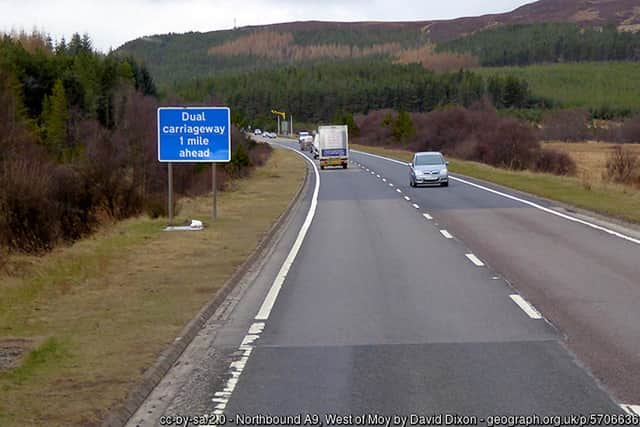Archaeologists to search near Jacobite battle site at A9
The excavation comes ahead of an upgrade to a six-mile stretch of carriageway between Tomatin and Moy in the Highlands.
Archaeologists will survey land that runs close to where the Rout of Moy took place in 1746 and where a section of Wade’s military road, built after the first Jacobite rising, can be found.
Advertisement
Hide AdAdvertisement
Hide Ad

Motorists will face disruption for up to three weeks from March 21 as trial trenching and land surveys are completed. Temporary traffic signals and a 30mph speed limit will be in place in both directions from 8am to 5pm Monday to Thursday and until lunchtime on Friday.
A statement from Transport Scotland said: “Other measures such as short term layby closures may also be in place throughout March and April as works are underway. Road users are reminded to plan ahead and to drive with caution on approach to the works area.”
The Rout of Moy was fought in February 1746 as Charles Edward Stuart travelled north following his retreat at Derby. He and a number of his men stopped off at Moy Hall, home of the staunch Jacobite Lady Anne Mackintosh, who helped raise clan members to support the rising. Meanwhile, her husband fought for the government side.
While the Prince and his supporters relaxed into some Highland hospitality, Lord Loudon, one of the government’s military leaders, was informed of the Jacobite party at Moy and planned a surprise attack, mustering 1,500 men.
With word reaching Moy of the oncoming soldiers, the Prince fled the house with the rest of his men.
According to accounts, there were only a handful of Jacobites – somewhere between four and around 12 – but their tactics succeeded in creating the impression of a far bigger force. By banging targes, shouting and firing one-by-one at the government men, they successfully saw off the threat.
The skirmish resulted in only one fatality - the piper, Donald Ban MacCrimmon.
As a result of the rout, Lord Loudon was moved on from Inverness, with the Jacobites entering the Highland capital two days after the eventful night at Moy.
Advertisement
Hide AdAdvertisement
Hide AdThe stretch of military road at Moy forms part of the section that runs from Dunkeld to Inverness that was built between 1728 and 1730 under orders of General Wade.
Archaeologists have made important discoveries at several sites on the A9 as upgrades of the carriageway progress.
Fresh light was shed on the Battle of Killiecrankie, where Jacobites defeated the government army in 1689, when archaeologists working on the A9 improvement project discovered more than 40 musket munitions and a number of personal items such as part of a sword belt, two buckles and buttons at the Perthshire site.
Meanwhile, at Berriedale Braes north of Inverness, the site of a Mesolithic hunter gatherer camp dating back to 6,000 BC was discovered by archaeologists hired by Transport Scotland. Remains of small shelters and fires were discovered, along with flints and other small tools. It is believed the discoveries are linked to the earliest humans living in Caithness.
A message from the Editor:Thank you for reading this article. We're more reliant on your support than ever as the shift in consumer habits brought about by Coronavirus impacts our advertisers.
If you haven't already, please consider supporting our trusted, fact-checked journalism by taking out a digital subscription.
Comments
Want to join the conversation? Please or to comment on this article.
